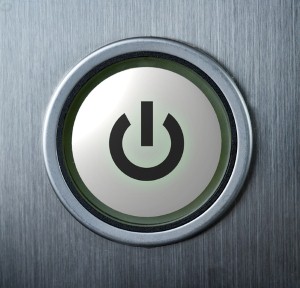
How to change what the power button does
By admin on August 25, 2011
In the past few posts, we've covered a whole slew of Windows shutdown options. The underlying message has been: don't turn off a computer by pressing the power button, unless the PC's having some serious problems and needs a hard reboot. Of course, some users might still be tempted to press the power button when they shut down, an action that may lead to the type of damage that requires computer repair.
To limit the damage this action causes, consider changing the power button's function.
Change the power button's behavior in Windows
1. Click "Start" and then "Control Panel."
2. Open the "Power Options" menu, usually located under a heading like "System Maintenance" or "System and Security."
3. In newer versions of Windows (including Vista and 7), users should be able to see click the "Choose what the power buttons do" option on the left hand menu. In Windows XP, they may have to click the "Advanced" bar in the Power Options dialog box.
4. On desktops, users will normally be given the option to have their computer go to sleep, hibernate or shut down entirely when they hit the power button. On laptops, they can customize shutdown options for when the computer is plugged in or operating on battery power. Additionally, laptop users can even determine what their computer does when they close the lid.
5. When finished determining actions for the power button, simply click "OK" or "Save changes."
If after making these changes users find they need to perform a hard reboot to restore a frozen or sluggish computer, they can simply hold down the power button for five to 10 seconds, which should override any preset functions and shut down the computer completely. Seeking professional computer repair in Washington, D.C., may be good idea if it seems their computer performance is so poor that they need to perform hard reboots regularly.
For a Free Computer Repair Quote Call (202) 670-9966
Related Computer Repair Articles
Jury still out on the new wave of tablet/laptop hybridsWhat type of web hosting is right for you?
Blue screen does not necessarily mean end of computer
Should I Abandon Internet Explorer?
Can technology help you increase your productivity?



Leave a Reply